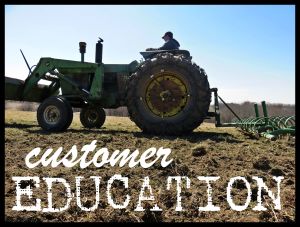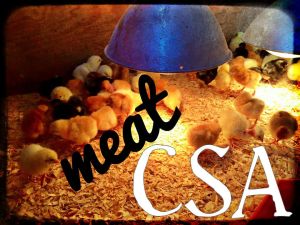Spring on the farm is often a rushed time because everything is coming to life all at once! On our farm that means projects that have been thought about all winter need to begin, new livestock are being born, work needs to begin in the garden, and so much more. To make matters worse it always seems like everything is a priority and there will never be enough time to accomplish all that we want to get done. That's where a good set of tools come in though. Of course that could mean "mental tools" like using your knowledge of the ground you are working to make decisions on planting or grazing. Or, it could mean "physical tools" such as my John Deere 4020 that is a fixture in most every project that happens on our farm. In the spring though there are often certain tools that shine, and while I may use them from time to time all throughout the year there won't be many days in March or April where you wouldn't finding me using one of them. Some tools make the work more efficient, some bring better quality to the work, and some even make the work more enjoyable!
Below you'll find my "top 5 tools for spring on the farm", but I want to hear what some of your favorites are. Comment below ...
Five Tools For the Farm in the Spring
- Stihl Chisel Tooth Circular Saw: This is a blade that attaches to my FS130 trimmer and it makes prep work for the electric fences go much more quickly and take much less toll on my back.
- Steel Post Pounder: There is nothing fancy about a post pounder, but I like one that has plenty of heft and no handles to cause me trouble.
- Rear-Tine Garden Tiller: Even though our garden produce isn't something that we sell it plays a huge role in the viability of our farm. That's why a good rear-tine tiller is so important in the spring.
- Weather App for my Phone: Tools aren't just for hitting, cutting, and building ... sometimes they help you plan your day or week! I've been trying to use the technology I already have for more than just funny YouTube videos (not to be confused with the super educational Beginning Farmer Videos that will be coming soon). Keeping tabs on the weather helps me plan my days, and if the forecasts are trustworthy, my week.
- Family and Friends: I'm not saying that my family and friends are tools, but they sure are a big help and are more important than any of the other tools that I find myself using on the farm. Even more so than my tractor!
As always, I want to thank you so much for listening and supporting the show with your encouragement and reviews on iTunes! I am continually working to produce a better show, and I'm thankful for all of the listeners sticking with me as I learn.
If you do enjoy the show, don't forget that you can subscribe on iTunes and leave a five star rating and review (by clicking the link). If you are an Android phone user you can also subscribe on the free Stitcher App. It is so very encouraging to know that people are listening and enjoying the show!
I would love to hear your questions, show ideas, or comments about the show. Feel free to shoot me an e-mail! As always you can follow along with "The Beginning Farmer" and Crooked Gap Farm by checking out these links ...


